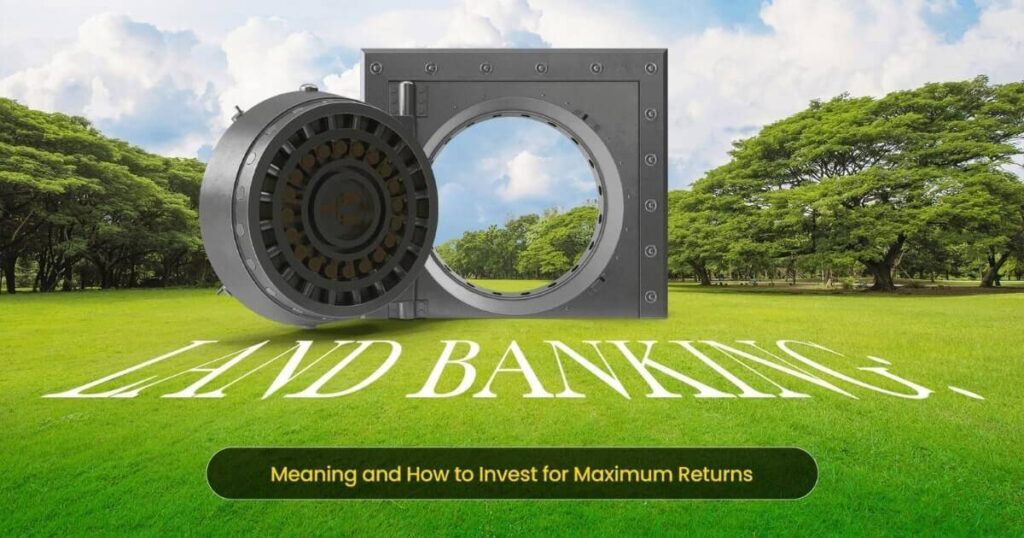When I talk about smart investment strategies, one concept that often surfaces in my research and discussions is land banking. Now, you might be wondering, as I once did, “What exactly is land banking?” Simply put, it’s the practice of purchasing undeveloped land with the expectation that it will increase in value over time.
In our modern world, where investment portfolios are as diverse as they are complex, I’ve found that land banking holds a special place. It’s not just about buying land; it’s about envisioning its potential. Whether it’s a barren plot today that could turn into a bustling commercial hub tomorrow, or a quiet piece of land on the outskirts of a city that could someday be a thriving residential area – that’s the essence of land banking, a concept that I’ve grown increasingly passionate about.
As our cities expand and our populations grow, the demand for land increases. This makes land banking a significant part of modern investment strategies. I’ve noticed that individual investors, including myself, are also finding their footing in this arena. We’re recognizing the potential of land banking as a way to diversify our portfolios and possibly reap substantial rewards in the long term.
In this article, I aim to break down what land banking really entails and how you can invest in it to get maximum results, sharing insights from my journey and research.
What is Land Banking?
Land banking is a real estate investment approach that’s focused on the long term. Instead of buying a house or a building, you’re buying a piece of undeveloped land. It’s not about what’s on the land right now, but what that land could turn into in the future.
Now, you might wonder, as I did, “How is this different from regular real estate development?” The key difference is in the approach and the timeline. Traditional real estate development typically involves buying land, developing it fairly quickly – maybe by building homes, commercial spaces, or other structures – and then selling or renting it out for a profit. Land banking, on the other hand, is more about playing the waiting game. You’re not rushing to build something. Instead, you’re waiting for the right time when the value of the land has gone up, which could take several years, sometimes even decades.
Some investors, choose to buy land that already has some infrastructure in place – think roads, electricity, or water supply. This can be a smart move because it often means the land has a higher potential for development and could appreciate faster.
How to Invest in Land Banking for Maximum Returns
If you’re looking to start investing in land banking and want to make the most out of your investment, there are some key steps you should follow. So, let’s talk about how you can do this smartly and effectively, based on my experience and research.
1. Identify High-Potential Locations
The first step you need to take, as I did, is to look for areas that have a high growth potential. This could mean areas near cities that are expanding, places where there’s talk of new infrastructure like highways or airports, or regions where new commercial or residential developments are planned. The trick is to spot these opportunities before everyone else does.
2. Conduct Thorough Due Diligence
Once you’ve got your eyes on a potential piece of land, it’s time to do your homework. This step is crucial. You need to check everything – the legal status of the land, zoning laws, any potential environmental concerns, and future area development plans. You need to uncover every piece of information that can affect the value of your investment.
This is where you bring in the experts. Collaborating with reputable land banking firms, developers, or professionals can make a huge difference. For instance, Mixta Africa is a developer you can trust. We are known for our reliability in the land banking sector. We can offer valuable insights, help you navigate the complexities of land transactions, and provide access to prime land that you might not be able to find on your own.
We also have a track record of identifying lands with great potential and managing the land banking process efficiently. We know the market, have the right connections, and can guide you through the entire process, reducing the risks associated with land banking.
Strategies for Maximizing Returns in Land Banking
To hit the jackpot with land banking, it’s not just about what you invest in, but also how and when you do it. Based on my experiences and the strategies I’ve learned along the way, let’s take a look at some smart tactics that can help you maximize your returns.
1. Timing the Market for Optimal Land Acquisition
Timing is everything. The real estate market, like any other market, has its ups and downs. The trick, as I’ve found, is to buy land when prices are reasonable, and before major growth or development kicks in. This might mean keeping an eye on economic trends, upcoming infrastructure projects, or changes in urban planning that could affect land prices.
2. Utilizing Zoning Changes and Urban Development Trends
Zoning changes can indeed turn a piece of land from a pumpkin into a carriage. A piece of land zoned for agricultural use that gets rezoned for residential or commercial use can skyrocket in value. So, staying informed about potential zoning changes has been crucial in my journey. Similarly, understanding urban development trends can give insights into where the next hot spot might be.
3. Understanding the Local Real Estate Landscape for Informed Decisions
Each area has its unique real estate dynamics. What works in one place might not work in another. That’s why, in my quest for successful land banking, getting to know the local real estate landscape has been imperative. This could involve researching past and current trends, speaking to local experts, and even getting a feel for the community’s plans.
Benefits and Risks of Land Banking
Land banking, like any investment, comes with its share of sunshine and rain. Understanding both the benefits and the risks has been key to making informed decisions in my investment journey.
1. Potential for High Returns Over the Long Term
One of the biggest draws of land banking is the potential for high returns. Over time, as the demand for land increases due to factors like population growth and urban expansion, the value of your land can increase significantly. This is a prospect that has always excited me and kept me engaged in land banking.
2. Diversification and Risk Mitigation in Investment Portfolios
Diversifying your investment portfolio means not putting all your eggs in one basket. By including land in my portfolio, I’ve been spreading out my risk. Land as an asset class often behaves differently from stocks and bonds, providing a buffer during times when other investments might be underperforming.
3. Market/Price Fluctuations
The real estate market can be unpredictable. Prices can go up, but they can also go down. Economic downturns, changes in local development plans, or shifts in market trends can all affect the value of your land. It’s important to remember, as I’ve had to, that while the growth potential is there, it’s not guaranteed.
4. Development Uncertainties
If your strategy involves eventually developing the land, there’s a whole set of uncertainties associated with that. Getting the necessary permits and approvals, dealing with construction costs, and navigating zoning laws can be complex. Plus, the market might change by the time you’re ready to develop or sell, affecting your returns.
Conclusion
Land banking is about buying undeveloped land as a long-term investment. It’s waiting for the right time when the land’s value goes up because the area around it grows or develops. This can be a smart way to make money in the future and add something different to your investments.
But remember, it’s not always straightforward. Land prices can go up and down, and sometimes developing the land can be tricky. Doing your homework and maybe teaming up with experienced companies like Mixta can help a lot. Through my journey, I’ve learned that patience, research, and strategic partnerships are key to navigating the land banking landscape successfully.












